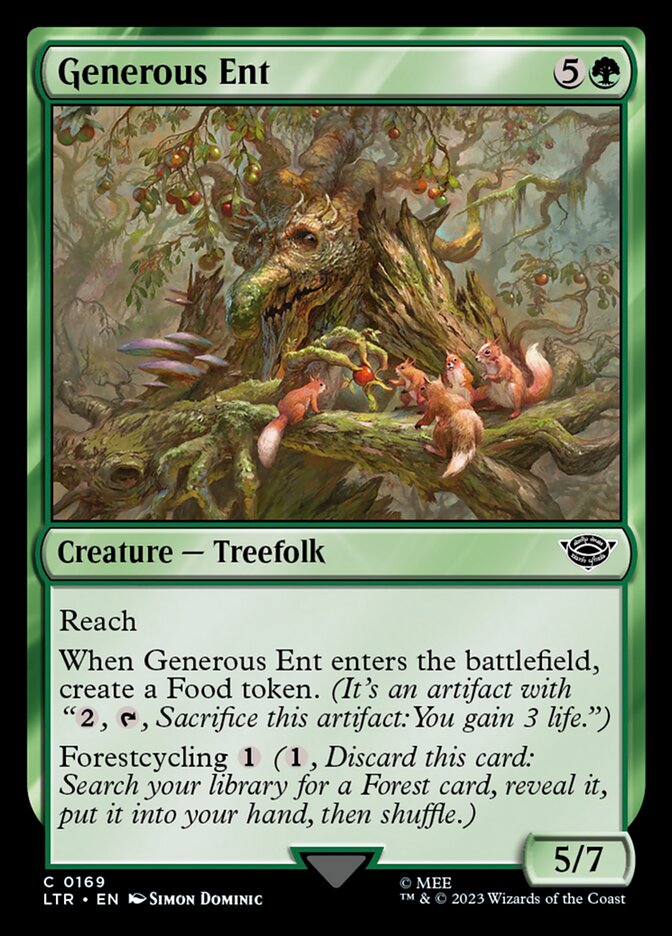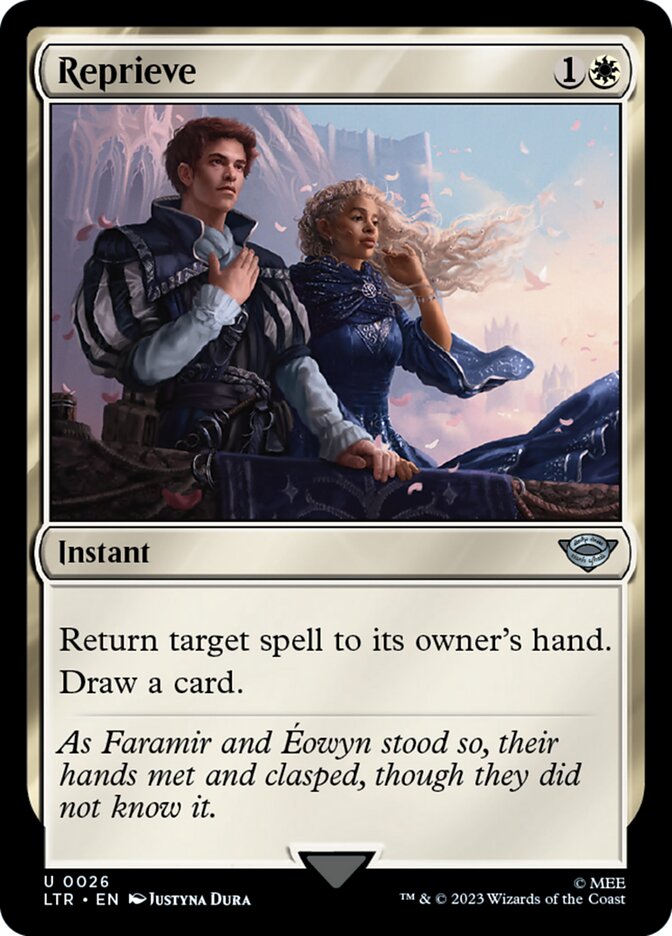Metagaming: This Week in Modern
One Ring, Bowmasters and Anael
The Modern format is incredibly dynamic at the moment. The introduction of the Lord of The Rings expansion brought us cool new tools and the format has a lot of tournaments, including as many as four challenges every weekend. Last weekend was even more exciting with the Grand Prix Bologna and the Qualifier Showcase. Every archetype is trying to innovate, trying to adapt to the addition of Orcish Bowmaster and The One Ring. This article aims to keep you informed about the latest changes in Modern and my opinion on the next step.
This article is possible thanks to the awesome work of Anael Yahi, who posted incredible data on Twitter and I will analyze those here.
The State of Modern Before This Weekend
Last weekend marked the third week of the LoTR-modern era . The first two weeks witnessed the downfall of the previously dominant deck, Indomitable Creativity . The One Ring offers protection to everything, including Archon of Cruelty, and the Orcish Bowmaster also excels at attacking Dwarven mine tokens.

Reshaping 4 Color Midrange
The 5-color Creativity deck relied not just on the powerful RRR sorcery but also incorporated the best midrange cards in the format, such as Teferi, Wrenn and Six, and Leyline Binding, to name a few. These powerful cards haven't disappeared from the format but have found a new home in the 4-color midrange deck, now employing Omnath / The One Ring in place of Archon/Creativity as a top curve. This swap provides a less brutal end game but a much improved mana base. The previous mono-red 5-color configuration led to functionality issues, especially when Dwarven mines were drawn naturally.
Example deck

https://mtgdecks.net/Modern/4-color-omnath-decklist-by-xfile-1695070
Living End is Back!
The popularity of the Living End deck was also on the rise before this week. With graveyard hate in low supply, it's an ideal time to play a graveyard-centric archetype, especially one that's been improved with the additions of Generous End and Oliphant.
While Living End was generally successful in games where it could resolve its namesake card, it was often at risk from burns and flying creatures, both of which Generous Ent helps to counter.
Blood Moon was another issue, but the addition of a forest-cycling creature increases the deck's resilience against the red enchantment.
Example deck

https://mtgdecks.net/Modern/living-end-decklist-by-aron-freyr-petursson-1695572
Tournament Analysis: Grand Open Qualifier Bologna

Modern has consistently demonstrated itself to be a diverse format, offering a multitude of viable strategies for tournament play. Although some speculated that The One Ring might lead to a more homogeneous metagame, Modern has maintained its variety. There are several reasons for this: decks are costly, and players accumulate experience with their chosen decks, often leading to a strong commitment to a specific archetype. This makes it more sensible to adapt one's existing archetype to the shifting format, rather than switching archetypes to fit the format.
Although some speculated that The One Ring might lead to a more homogeneous metagame, Modern has maintained its variety.
I don’t have a game design opinion on this, whether it’s a good or bad thing. I view this fact as a strategic feature. A diverse format where no archetype claims more than 10% means that no deck can justify specific choices solely to beat a dominant archetype, whether that's in terms of deck selection or specific sideboard cards. Versatility is the name of the game.
Four-Color Creativity making a comeback?
Despite not appearing in previous MTGO events, Four-Color Creativity was surprisingly represented in 7% of the Bologna metagame. This raises questions about whether MTGO's results were late or ahead about this archetype. Examining the best-performing creativity decklist, there are no common innovations that could justify those numbers. Yet, some players maindecked a couple Reprieve (you can use this link to see all the Creativity decks playing Reprieve)
Remand has always been legal, but Reprieve doesn't counter, which is a vital feature against Cavern of Souls and Delighted Halfling. Plus, it is a white card. This works well with the mana base since many of your instant cards need white mana. It means you can cover both necessities with an untapped Sacred Foundry.
There could be several other hypotheses to explain those 7%. Real-life Modern play is somewhat less dynamic than online play because cards are pricey. But, Creativity players could also have identified a good metagame positioning. This is where data analysis becomes useful.


One intriguing piece of data to look at is the conversion rates. Out of the 676 players entering the tournament, 64 made it to day two. This sets a benchmark conversion rate of 9%, below which an archetype underperformed, and above which it overperformed. Creativity passed this mark, suggesting (pending confirmation) that the archetype isn't dead and still has a role in this metagame.
Hammer Disappoints: From Tier 1 to Tier 3?
Among the most played archetypes, Hammer had the most disappointing conversion rates. The trigger from The One Ring completely stalls the archetype, and the interaction between Esper Sentinel and Orcish Bowmaster proves deadly for Hammer. Even worse, Creativity, which used to be a poor match-up (although Hammer could occasionally steal games with the Orvar tech), is now evenly matched with Four-Color Control. This new contender doesn't suffer from the Orvar weakness and has many more removals. These factors spell bad news for Hammer, which was on the brink of being a Tier 1 archetype and now risks dropping to Tier 3.
Mono Green Tron
Mono-Green Tron makes a resounding return to Modern with a whopping 25% conversion rate. Not only does The One Ring fit wonderfully in this archetype, but it's also well-equipped to prey on other decks utilizing The One Ring, thanks to its potent late-game tools.
Example deck

Mono-Green Tron by GrandmasterFlesh — Top16 @ Bologna
Yawgmoth
Yawgmoth is an excellent fit for Orcish Bowmaster, as it both enhances its midrange game plan and serves as a stellar enabler for Chord of Calling, effectively doubling the functionality of Wall of Roots for this purpose. The archetype can also incorporate The One Ring. We're already utilizing life total as a resource in Yawgmoth for those valuable draws and we don’t really gain life, but the "time walk" offered by the ring, along with a bit of assistance in finding the missing combo pieces, make the card an interesting addition to the Yawgmoth strategy. Moreover, Delighted Halfling, a 2 toughness mana dork immune to Wrenn and Six, mitigates our vulnerability to Fury and helps beat counterspell, given that many of our key cards are legendary (Yaugmoth/Grist/Ring). With all these additions from Lord of the Rings, Yawgmoth achieved a solid 17% conversion rate. There is still a debate between decklist whether The One Ring is good or not in the archetype, but two new cards is a big improvement for an archetype that was already good.
Top deck from the event:

GOLGARI YAWGMOTH by Wojciech Kowalczuk Top4 at Grand Open Qualifier Bologna @Legacy European Tour
Best Performing: Boros Convoke & Mono-Black Coffers
Boros Convoke and Mono-Black Coffers boasted the highest results regarding this specific data, with conversion rates of 25% and 33% respectively. Such numbers often arise from a very small sample size, which is indeed the case this time. For instance, out of the 9 players who played Coffers in Bologna, 3 made it to day two. It's hard to draw firm conclusions from such figures, but one useful approach could be to correlate conversion rate with a win-rate matrix for a more in-depth analysis. This method would also provide an opportunity to verify or challenge the good results of Yaugmoth, Tron, and Creativity, while examining Hammer's disappointing performance.
Going Deeper: Winrates Analysis

Here is the win rate matrix of Bologna and several other tournaments that took place last weekend. The Boros Convoke and Mono-Black Coffers were not included since there were so few of them. I reached out to @YahiAnael on Twitter, and he kindly provided me with the data.
Boros Convoke had a 56% win rate in the tournament, and Coffers had 53%. Of course, this data is still subject to a low sample size, but we have two separate pieces of data that suggest these archetypes have potential. I wouldn't go further than saying they have "potential" due to the low sample size, but even if they were scarce, these matches were won, so the data is not meaningless. As I am preparing for the modern events in Barcelona, I will definitely give these archetypes a try using the DASH Method I talked about in my previous article (Develop Any, Scrap Harshly).
In terms of the conversion rate, we had some performance questions about Creativity and Hammer. They both posted a 50% win rate from roughly 1000 matches each, which is a respectable sample size. If these win rates and conversion rates don't justify a promising future for these two archetypes, experienced players may still have reasons to continue playing them. It's possible that with significant expertise, we could squeeze out an additional 1 or 2 percentage points, making these archetypes much more appealing.
Yawgmoth, Tron, Rakdos Scam, Grinding Breach, and Grixis Death’s Shadow each posted around a 55% win rate, which is quite dominant in such a format. What they all have in common is that they play LoTR cards, whether it's The One Ring or Orcish Bowmaster.
Anael Yahi got us covered and shared the card win rate of the weekend.

LoTR Cards Outperform the Rest.
The four LoTR cards all posted win rates above 50%, with The One Ring and Orcish Bowmaster leading the card win-rate competition. Murktide finished last, and the Izzet archetype achieved a win rate of 47%. These performances demand a significant adaptation to this new era, particularly to counter Bowmaster. The opponent can activate Ledger Shredder, thereby triggering the orcs. Furthermore, Considers and Mishra’s Bauble offer another way for the orcs to trigger, and Ragavan / Dragon’s Rage Channeler, being x/1s, make them tempting targets for pings.
Adaptation through gameplay could be possible, choosing the moment to play Bauble and Considers carefully, primarily dashing Ragavan and only playing Channelers when delirium is secured. However, Ledger Shredder has to go; the metagame is not as dominated by Rhinos as it was before.
Final Thoughts: My Current Choices
Moving forward, unless I have a unique understanding of an archetype, I wouldn't choose anything that doesn't play LoTR cards. This still leaves plenty of options, with Green Tron, Yaugmoth, Rakdos, Grinding Station, and Death’s Shadow all ticking this box while achieving a 55%+ win rate in Bologna.
Boros Convoke and Mono-Black Coffers are big question marks. We might be discussing the next best archetype of the format as it's reasonable to assume there is still much to learn about the implications of LoTR. Conversely, we could be talking about bad archetypes that peaked due to luck. We won't know until we try them out.
Until next time,
Rémi Fortier



